Since the Russian invasion of Ukraine, transatlantic relations strengthened significantly. Especially at the easternmost point of cooperation, in Central Europe. The states in the region – with the exception of Hungary – have been supporting the Ukrainians with arms and aid from the very beginning, with Poland standing out as one of the main donors. Romania is also taking advantage of the situation to deepen its already close cooperation with NATO. The aim of the analysis is to see what these two middle powers can achieve together, with Ukraine post-war and potentially a European Union member state.
Polish-Ukrainian Commonwealth
In its latest issue, Politico toys with the idea of what will happen if Ukraine (along with Moldova) joins the European Union. It is still a hypothetical idea at the moment, but the will is there, even though it would raise many questions about the possible accession of a country that has problems with the rule of law, for example. Given their shared history and the dominance of the Polish economy in Ukraine, Kyiv’s early accession is a priority for Warsaw.
The two states have a shared history dating back to the Middle Ages. Kyiv’s majority was part of the so-called Rzeczpospolita, the western half of what is now Ukraine, centered in Lviv.
In this historical region, called Galicia, the noble ruling class spoke Polish, while Lithuanian and Ukrainian were spoken mainly by the peasants. After the third and final partition of Poland, Galicia became part of the Habsburg Empire. In the last third of the 19th century, the area gained considerable autonomy; political leadership was largely in the hands of the Polish aristocracy and nobility (sláchta). Meanwhile, growing national consciousness increasingly pitted the Poles against the Ukrainians. With the end of World War I, ethnic antagonisms took on a new dynamic with the rebirth of Poland and the establishment of a new Ukrainian state. Marshal Pilsudski wanted to create a Polish–Lithuanian–Ukrainian federation, but the desire for national independence was stronger than the prospect of a multinational superpower.
In the Polish Republic created by the Peace Treaty of Riga (1921), nearly 70 percent of the population was Polish, Ukrainians numbered nearly 5 million, and the Belarusian population of one and a half million, with 2.7 million Jews counted separately, accounted for 8.5 percent of the population.
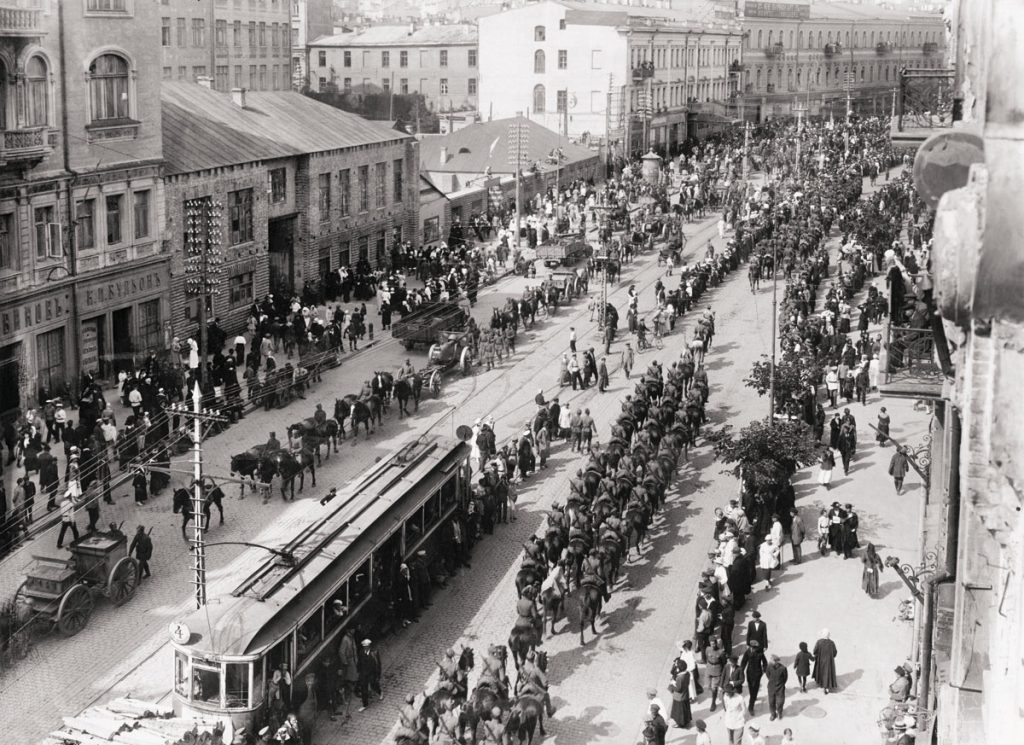
Polish troops enter Kyiv in May 1920 during the Polish–Soviet War. Following the Peace of Riga signed on 18 March 1921 (Source: Wikimedia Commons)
From Mutual Hostility and Resentment to Deep Cooperation
In the German–Soviet war, present-day Ukraine became a theatre of war and suffered great human and material losses. Unforgotten is the mass murder of Polish villagers in Volhynia in 1943 and in Eastern Galicia in 1944, which cost the lives of 70,000-100,000 people. The perpetrators were nationalist Ukrainian partisans, members of the Ukrainian Insurgent Army (UPA). In response, Polish police attacked Ukrainian villages, beat up young Ukrainian men, and destroyed communal buildings. During World War II, the Polish resistance killed several hundred Ukrainian community leaders in the Chełm region and murdered Ukrainian villagers. Between 20,000 and 25,000 people died.
But this pales in comparison with the suffering of both Poles and Ukrainians in the Soviet Union. In 1932-33, 4-5 million Ukrainians starved to death in a man-made famine. Two years later, Soviet security forces murdered more than 100,000 Poles in the so-called “Polish operation”. Many more Poles were deported to Siberia.
All this came to the fore when the right-wing conservative Law and Justice Party won the Polish elections in 2015. A few months earlier, the Ukrainian parliament had passed a law allowing people who denied the heroism of Ukrainian national resistance fighters to be punished. The new Polish government challenged the unwillingness of Ukrainian leaders to accept the responsibility of OUN and UPA for the Volhynia massacres. In January 2018, the Polish parliament passed a bill making it a criminal offence to deny the “crimes of Ukrainian nationalists”.
These historical issues are still unresolved and emotionally highly charged. They have a negative impact on the relationship between the nations without, however, changing Polish political support for Ukraine. Common political interests now prevail.
Russia’s aggression against Ukraine has created a new situation in Polish-Ukrainian relations, which have also been strained by the past. Even before the war, around a million Ukrainian migrant workers were already working in Poland, and then came the flood of refugees. They were integrated with exemplary speed, and the slight language difference guarantees that the vast majority of them will not return to Ukraine even after the war is over, making the Polish economy, which is developing much more dynamically than the Hungarian economy, even stronger. Unique is the depth of political and military assistance Poland has extended to Ukraine’s struggle for self-defence.
History plays an absolutely focal role to Ukrainians in expressing their sense of belonging in the EU. Only last year, Ukrainian Foreign Minister Dmytro Kuleba joined his Polish and Lithuanian counterparts in issuing a declaration that the long history of the Polish-Lithuanian Commonwealth shaped European civilization to the same degree as Magna Carta and the French revolution. Making the case for Ukraine’s “full” EU membership, the three nations declared their Commonwealth heritage instilled them with a shared democratic and anti-tyrannical pedigree.
The Lesser–Known Polish–Romanian Friendship
Poland and Romania are not only the two largest countries in Eastern Central Europe but also tried and tested friends and strategic partners who have always had a friendly and deep relationship. The two country established their diplomatic relations shortly after the first World War and the resurrection of the Polish state. That was followed by series of treaties between the two states.
The first signed on 3 March 1921 by Ministers of Foreign Affairs Eustachy Sapieha and Take Ionescu on behalf of Marshall Józef Piłsudski and King Ferdinand I, the treaty stipulated that if one country were attacked, the other would consider itself in a state of war and would provide military assistance. Originally, the alliance meant an attack from the East but this commitment was extended in 1927 to attacks from any direction. The two countries especially committed their support in the case of Soviet aggression across their Eastern borders.
Romanian–Polish relations witnessed an obvious cooling at the beginning of the nineteen-thirties. While Poland got closer to Germany, Romania and the USSR negotiated the signing of a mutual assistance treaty. Thus, between 1932 and 1936, Romanian-Polish military cooperation was practically discontinued. The increasing danger of aggression led to the reactivation of the alliance in 1937.
France and Great Britain tried to help Romania and during the following period signed economic agreements with it. Moreover on 13 April 1939 the two European powers ordered political guarantees concerning any potential aggression against Romania and Greece. Having a reduced practical value these guarantees were nonetheless a show of support for Romania’s international position at that moment. Polish diplomacy
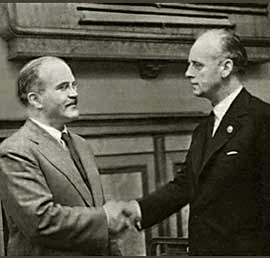
German Foreign Minister Joachim von Ribbentrop and Soviet Foreign Minister Vyacheslav Molotov at the signing of the so-called Molotov-Ribbentropp pact in Moscow on 23 August 1939. (Source: Wikimedia Commons)
also secured British guarantees to Romania in the Polish-British Common Defense Pact of 1939. Diplomats and strategists in Poland viewed the alliance with Romania as an important part of Polish foreign and defen-se policy, but it eventually proved to be mostly irrelevant. It became, however, increasingly clear that the likelihood of Anglo-French intervention to assist countries in Eastern Europe was reducing day by day. The conclusion of the Soviet–German Non-Aggression Pact on August 23rd 1939 and especially the provisions of its secret protocol would clearly demonstrate this.
After the Red Army joined the German attack on September 17, 1939, with Western assistance not forthcoming, the Polish high command ordered its units to evacuate to France. Many units went through Romanian borders, where they were interned, but Romania remained friendly towards Poles, allowing many soldiers to escape from the camps and to move to France. Romania also treated interned Polish soldiers and immigrants with relative respect throughout the war even after it joined the Axis in 1941.
During the 1960s, and especially the 1970s, both Poland and Romania focused their activities conducted within the framework of Comecon (the acronym for the Council for Mutual Economic Assistance).
The “Golden Age” of cooperation (especially economic cooperation), however, began in 1970, when Edward Gierek became the first secretary of the ruling Polish United Workers’ Party. The two states concluded a variety of bilateral contracts, with most, as in the past, concerning economic issues, particularly heavy industry.
Today, Poland and Romania are both members of NATO and cooperate deeply in the EU.
The bilateral trade has recorded a constantly upward trend in the recent years. Both exports and imports growing steadily. In 2016, Poland ranked fifth among goods’ providers and ninth in terms of a destination for Romanian products. According to the statistics of the Polish Ministry of Economic Development, in 2016 the commercial exchange between Romania and Poland reached a record value of €4.86 billion. That means an increase of almost ten per cent compared to 2015, and a doubling in comparison to 2007, when the commercial exchange amounted to €2.17 billion.
Shifting the Focus of European Cooperation Eastwards
Romanian President Klaus Iohannis and Polish President Andrzej Duda, as the leaders of the two major Central European powers, initiated the Bucharest Nine cooperation after meeting in person in November 2015. Seven other countries in the region – Bulgaria, Slovakia, the Czech Republic, Lithuania, Latvia, Estonia and Hungary – joined the group. The initiative, which is also reminiscent of the Soviet-Russian anti-imperial cordon sanitaire concepts of previous eras, came about after the Russian invasion of Crimea and eastern Ukraine in 2014.
Hence, the Bucharest Nine are a joint response by NATO’s Eastern European member states to Moscow’s renewed expansion.
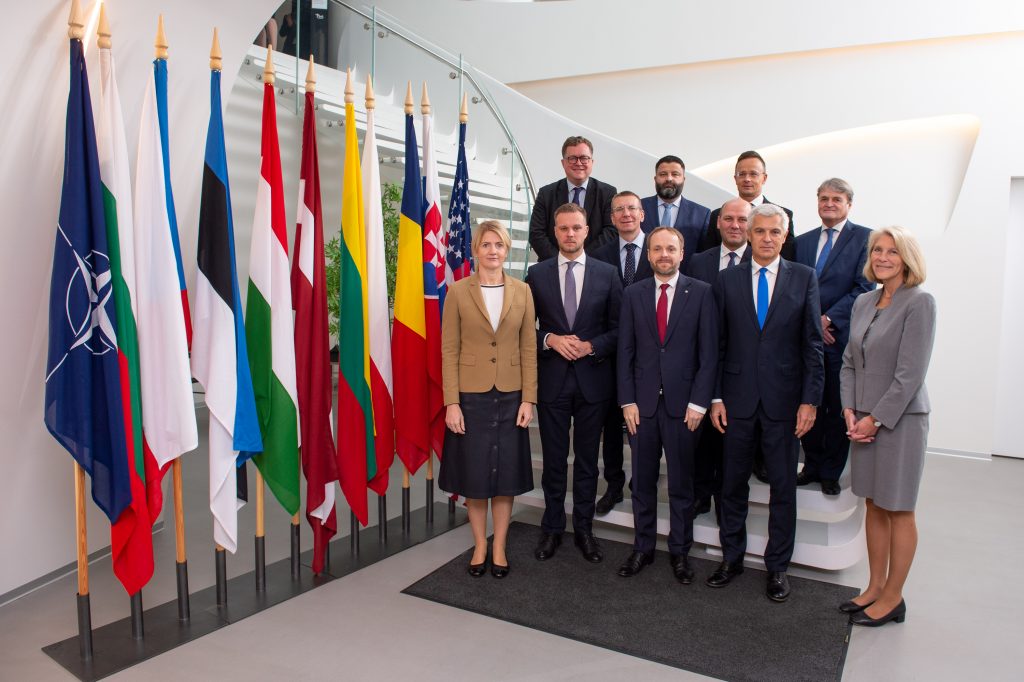
Bucharest Nine ministerial meeting in Tallinn, Estonia, on 27 October 2021 (Photo: Estonian Foreign Ministry / Flickr.com)
“The B9 format gives opportunities to Poland and Romania to cooperate with each other. Polish–Romanian bilateral relations before February 2022 were, however, characterized by both cooperation and limited rivalry: Romania wanted the Black Sea to become the permanent center of NATO attention – while Poland opted for the Baltic sea. From time to time – in the Polish press, academia and in some political circles – the idea of bringing the two countries closer to each other appeared, but this never really materialized. Resulting from the 2022 renewal of the Russo-Ukrainian war, the need to make this cooperation a closer one materilized again. Right now a possible cooperation is driven by the plans to buy the same equipment for both countries (e.g. F-16, HIMARS, Patriot, K9/Krab SPH), and the isssue of interoperability/joint training springing out of it,” Zsombor Zeöld, Poland expert, told The Long Brief.
About the future of Polish–Romanian relations, the expert said: “In light of external factors (such as the ongoing Russo-Ukrainian war, the likely changes in U.S. posture towards European NATO members), the chance is there to make Polish-Romanian cooperation closer – however, it is likely that limited rivalry will remain within this realm”, Zelda added.
Deeper economic and political interests, at least partially, differ – for example Poland strives to improve its exports; the two countries compete for installations (logistical/training centers) concerning the war in Ukraine; and – when it comes to the political factor – NATO’s Eastern Flank expansion will likely to bring along a recalculation of (exercised) political power within NATO.”
In the last summit of the B9 participants approved Ukraine’s future membership in NATO and plan to continue providing financial and military support to Kyiv. In addition, the countries call on Russia to immediately withdraw its troops from Ukrainian territory, the joint statement says.
Speaking about the Three Seas Initiative, Polish politicians stress that the initiative has no geopolitical character. These statements seem to mask the fact that the Three Seas Initiative is strongly driven by Polish and American geopolitical interests, and rather emphasise that pragmatic economic, security and infrastructure cooperation are not mutually exclusive and could form the basis for a broad regional alliance.
The aim is to counterbalance former West–East dependencies with North–South cooperation. Currently, the Three Seas Initiative is made up of 12 Member States with a population of around 112 million. Both the Three Seas concept and the Bucharest Nine are another version of the Visegrád Four cooperation – but with a different emphasis and a reduced weight for the very agile but problematic Hungarian leader Viktor Orbán, who is also a problematic figure because of his ties with Russia. In contrast to the V4 cooperation, which, contrary to its original purpose, has become a means of gaining international ground for the Hungarian prime minister, the two cooperation arrangements are clearly dominated by Poland and the Romania.
Conclusion
As mentioned in the beginning of the article, there is a strong will to take Ukraine inside the EU bloc. Ukraine’s admission would inevitably tip the EU’s center of balance to the east. Since Russia’s assault on Kyiv, Eastern voices — especially in Poland and the Baltics — have been driving policy like never before. Giving Kyiv a seat at the table would provide that flank of the bloc even more political and institutional weight. The West, and especially the countries bordering Ukraine, have to come to terms with the fact that unless Russia wins the war, a powerful military power has emerged.
“When Ukraine hypothetically at some point comes into the EU, the Easternization of the EU would continue, no doubt,” said Kai-Olaf Lang of the German Institute for International and Security Affairs to Politico.
A Polish-Ukrainian-Romanian axis could become irreversible not only militarily but also economically.
From a Hungarian point of view, it would therefore be a mistake to maintain bad relations with the actors of such an initiative. It is a strange twist of history that currently only Hungarian-Romanian relations can be described as satisfactory, while with the other two actors are downright hostile.
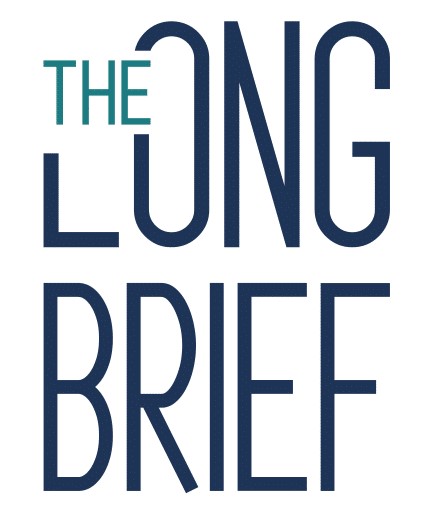
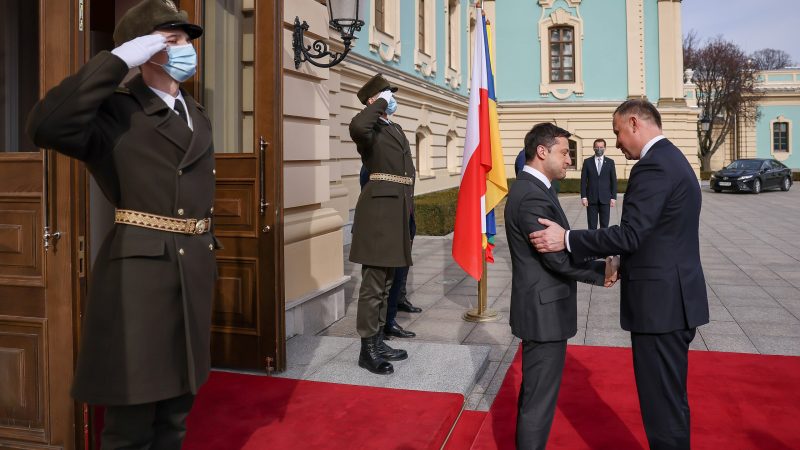
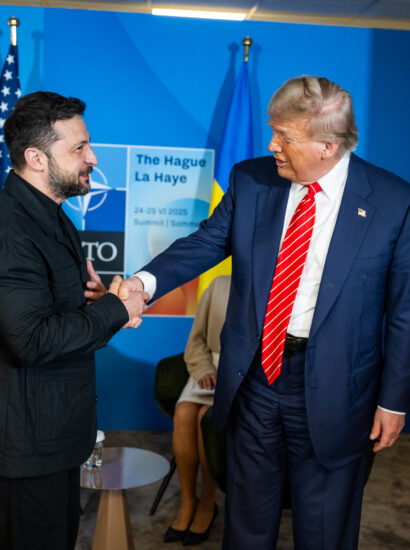
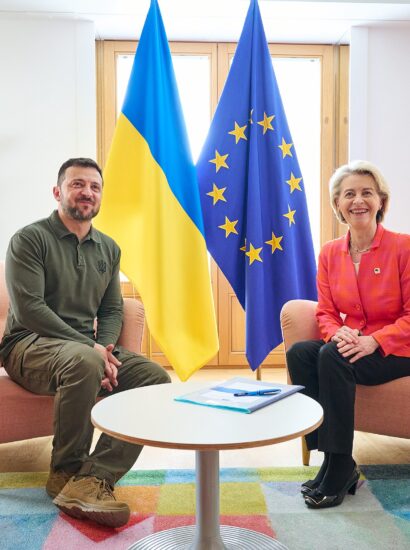
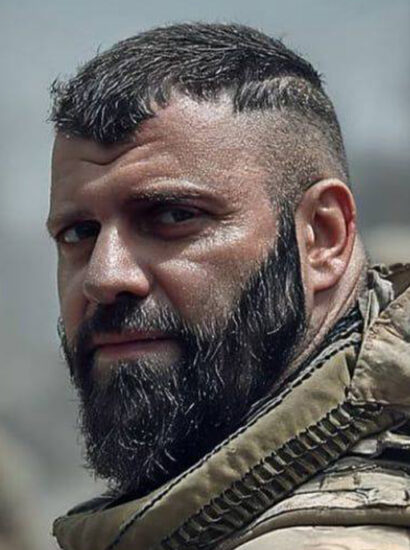

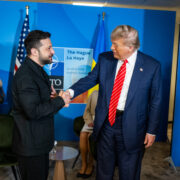

[…] important defensive alliance and it is crucial for Romania to remain part of this structure. From a geopolitical point of view, NATO membership is the only viable solution today to defend our independence, sovereignty and […]